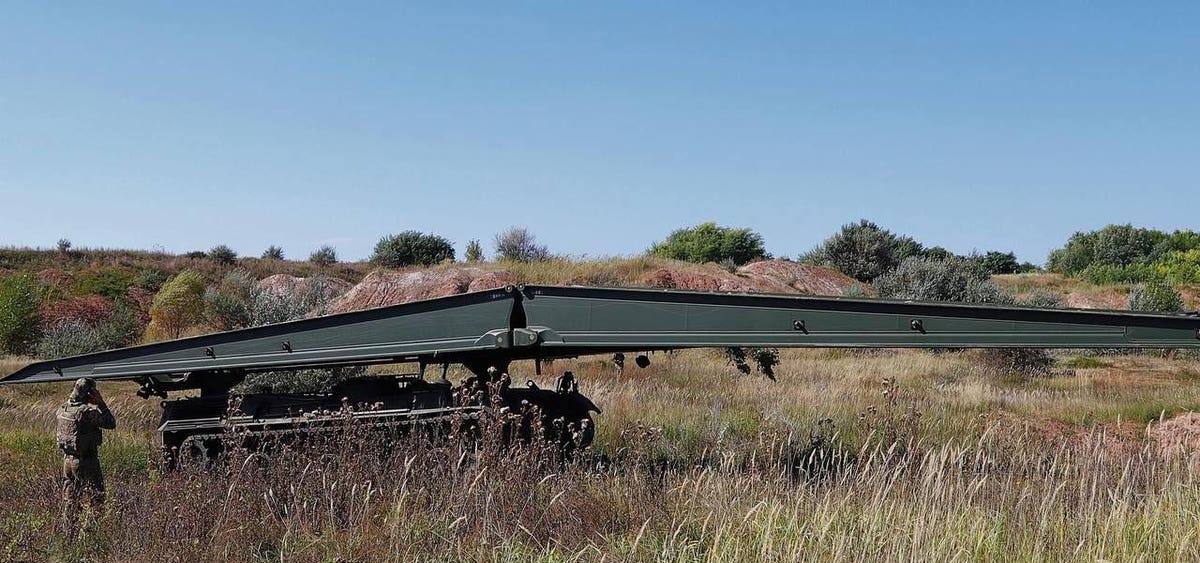The Ukrainian armed forces stood up around two dozen new brigades in the months leading up to its 2023 counteroffensive, which kicked off on June 4.
The Ukrainians equipped nine of these brigades mostly with Western-made tanks, fighting vehicles and artillery. The rest got maybe a battalion or two of European or American hardware and drew the rest of their heavy equipment from Ukraine’s deep stocks of ex-Soviet weaponry.
With its odd mix of ex-Soviet T-72AMT and T-72 Ural tanks and Polish-made PT-91 tanks and Rosomak fighting vehicles, the army’s 2,000-person 22nd Mechanized Brigade is representative of these hybrid brigades, which by now outnumber the nine largely NATO-style brigades.
Tellingly, Kyiv also assigned to the 22nd Brigade some of the Ukrainian army’s ex-German Biber armored bridgelayers. And it’s apparent why. The sector where the 22nd fights, just south of the ruins of Bakhmut in eastern Ukraine’s Donbas region, is a patchwork of fields, treelines, streams and canals.
Between ex-Soviet models, German-made Bibers and ex-American AVLBs, there might be a hundred armored bridgelayers in the entire Ukrainian inventory. They’re a precious resource.
The presence, or absence, of an armored bridgelayer can be the decisive factor in a mechanized battle. During a critical phase of an important fight in southern Ukraine’s Zaporizhzhia and Donetsk Oblasts back in June, a quartet of Ukrainian brigades had to halt their assault because the Russians had retreated across a stream, and there was just one available bridgelayer.
That’s one of the many surprising details in the latest report from analysts Jack Watling and Nick Reynolds from the Royal United Services Institute in London.
The four-brigade force—the army’s 23rd and 32nd Mechanized and a pair of territorial brigades—succeeded in clearing Novodarivka after a hard fight, then rolled east toward Rivnopil. The exhausted mech brigades stayed back while a territorial infantry force—having borrowed a few tanks—feinted once, feinted again and flanked the Russians.
The Ukrainian victory could have turned into something worse for the Russians—a rout—but there was a problem for the Ukrainians. A stream winding a few thousand feet east of Rivnopil. “Russian troops withdrew across a water obstacle behind the village and blew several agricultural dams to flood the area,” Watling and Reynolds wrote.
There on the far side of the flooded ditch, the Russians deployed anti-tank missiles. The Ukrainians might have tried to brave the missiles and force the watery fortification, but they were missing some critical equipment. “With only one obstacle-crossing vehicle available, the Ukrainian units had to pause to consolidate their gains,” according to the RUSI analysts.
Planners in Kyiv seem determined to prevent a similar holdup south of Bakhmut, where a powerful Ukrainian force—including the 22nd, 28th and 93rd Mechanized Brigades and the aggressive 3rd Assault Brigade—steadily has been advancing since early June.
This force crossed one key obstacle, the Donets-Donbas Canal, back in June. The second obstacle—and the current locus of the fighting—is a railway threading north-to-south through Bakhmut and adjacent settlements.
An armored bridgelayer can roll alongside tanks and fighting vehicles and lay down a long aluminum bridge—60 feet long, in the case of the Biber’s bridge. The span should support the weight of all but the heaviest tanks and fighting vehicles, allowing them speedily to cross water obstacles and trenches.
You don’t need an armored bridgelayer to cross train tracks. But the railway isn’t the only obstacle south of Bakhmut. There are countless streams and depressions. It’s not for no reason that, when the Russian army in early September counterattacked toward Klishchiivka, south of Bakhmut, it brought along a Soviet-style armored bridgelayer: an MTU-20, perhaps.
The bridgelayer managed to lay its span across a watery ditch. A few vehicles may have crossed. But then Ukrainian artillery dialed in. The barrage destroyed at least two vehicles, perhaps including the bridgelayer itself. The counterattack collapsed.
It’s unclear whether the 22nd Brigade yet has deployed its own bridgelayers. But that it even has bridgelayers is a clear sign commanders expect to use them, and soon.
Read the full article here





